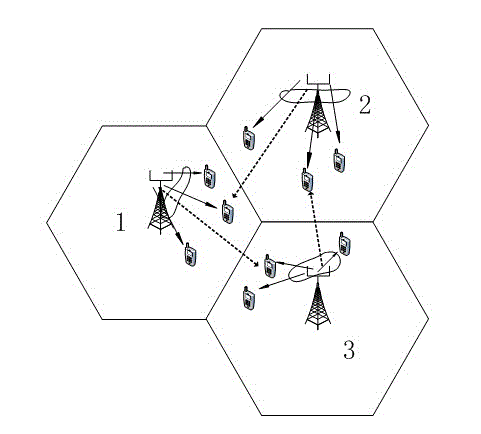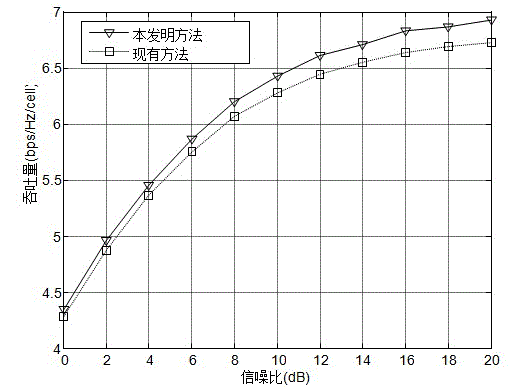Collaborative scheduling beam forming based user option method
A beamforming and cooperative scheduling technology, applied in electrical components, wireless communication, network planning, etc., can solve problems such as increasing codec complexity, increasing system load, and exchanging and transmitting less data.
- Summary
- Abstract
- Description
- Claims
- Application Information
AI Technical Summary
Problems solved by technology
Method used
Image
Examples
Embodiment Construction
[0034] The technical solutions of the present invention will be described in detail below in conjunction with the accompanying drawings and embodiments. The users involved in the present invention are located in three cells, and a base station is arranged in the middle of each cell.
[0035] like figure 1 As shown, a user selection method based on cooperative scheduling beamforming of the present invention includes the following steps:
[0036] Step 10) Initialization: Set the remaining user sequence U of each cell w =[1 w ,2 w ,...,K w ], selected user set S w = φ, candidate user set C w =φ, where w represents the code of the community, and the codes of the three communities are b, and w is b, or K w is the Kth user in cell w, and φ indicates that the set is empty. K is an integer greater than or equal to 3.
[0037] Step 20) Select the first user in each cell, including step 201)-step 203):
[0038] Step 201) Use the base stations in each cell to measure an...
PUM
 Login to View More
Login to View More Abstract
Description
Claims
Application Information
 Login to View More
Login to View More - R&D
- Intellectual Property
- Life Sciences
- Materials
- Tech Scout
- Unparalleled Data Quality
- Higher Quality Content
- 60% Fewer Hallucinations
Browse by: Latest US Patents, China's latest patents, Technical Efficacy Thesaurus, Application Domain, Technology Topic, Popular Technical Reports.
© 2025 PatSnap. All rights reserved.Legal|Privacy policy|Modern Slavery Act Transparency Statement|Sitemap|About US| Contact US: help@patsnap.com



